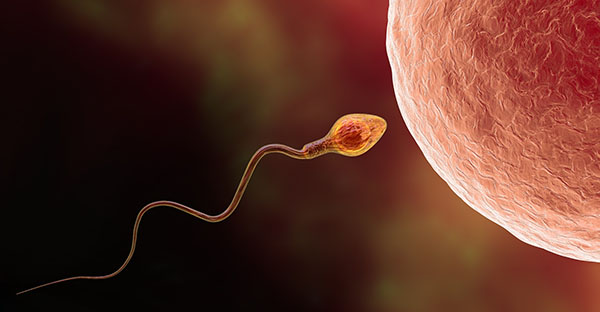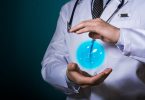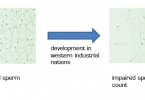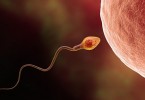A man’s fertility is usually not a question of his virility, but depends on his sperms’ ability to successfully fertilize an ovum. A comprehensive semen analysis, referred to as spermiogram, constitutes an important step towards assessment of male fertility.
A spermiogram is a microscopic analysis of ejaculate (semen) in a laboratory. This examination is fast, simple and non-invasive. Please see your urologist or andrologist for more information. To get a first clue you can also use a rapid test.
Costs of a Spermiogram
Expenses for a spermiogram average 100 to 200 €. If you have difficulties conceiving or if your gynecologist has recommended semen analysis, there is a fair chance that your health insurance will meet the costs.
Prior to Analysis
For the sake of validity semen is gathered after two to three days of abstinence. The specimen is collected directly into a sterile container. It is not recommendable to use normal condoms for semen collection, as most condoms contain sperm-harming substances that may cause mortification of spermatozoa. However, if you prefer to gather semen during intercourse special uncoated condoms are available.
The semen specimen has to be analyzed in a laboratory about 30 minutes to one hour after collection. A prolonged waiting period or cooling down of the ejaculate may harm the sperm cells. Therefore analysis should commence straight after liquefaction of semen, which usually occurs after 15 to 30 minutes. Analysis focuses on microscopic assessment of sperm cells regarding their concentration, motility and shape.
Spermiogram: Values According to WHO
Usually WHO (world health organisation) guidelines are used for spermiogram assessment. These guidelines have recently been revised by the WHO. Here is an overview of the new standard values for a normal spermiogram:
pH-value ≥ 7,2
Sperm concentration ≥ 15 million sperms per ml
Total sperm count ≥ 39 million sperms
Motility ≥ 32 % progressively moving spermatozoa, ≥ 40 % mobile sperms
Morphology >4 % normal shape
Percentage of living sperms (Eosin-test) ≥ 58 %
Anti sperm antibodies
Mixed antiglobulin reaction (MAR) < 50 % sperms with particles attachedLeucocytes < 1 million per ml
Volume
Normally the volume itself does not influence fertility. It is the number of sperm cells in the semen that makes the difference.
pH-Value
Usually the specimen should have an alcaline pH. An acid pH may kill sperm cells.
Concentration (sometimes referred to as the “count”)
To find out how many sperms are present in semen, a defined volume of semen is put into the counting chamber of a hemocytometer and spermatozoa are counted with the microscope. Subsequently the total sperm concentration can be projected.
Motility
According to WHO guidelines, sperms are grouped into three categories according to their motility:
Sperms with progressive motility, motile sperms and immotile sperms, that fail to move at all.
Semen quality is considered normal, when at least 50 % of spermatozoa are motile.
Morphology
This describes the shape of the sperm and is a major aspect for assessing fertility.
Sperms consist of a head, a midpiece and a tail. The head contains the nucleus with the DNA, surrounded anteriorly by an acrosome, which contains enzymes used for penetrating the female egg. The midpiece has many mitochondria, used for energy production for the journey through the female cervix, uterus and uterine tubes. The tail executes the lashing movements that propel the sperm forward.
A minimum of 4 % of all sperms have to be morphologically normal for good semen quality according to WHO criteria.
Viability
Sperm may be alive, but not moving. A specialized staining technique using eosin is applied to determine the percentage of sperm alive. Eosin penetrates the cell membrane of dead cells, staining them effectively. The cell membrane of living cells however is impenetrable for eosin, leaving life cells unstained.
Anti-Sperm Antibodies
Some men may produce antibodies to their own sperm. These antibodies may decrease fertility rates in a number of ways. They may impede the movement of the sperm through a woman’s cervical mucus, inhibit the binding of a sperm to the egg, and/or inhibit its penetration into the egg. The presence of these antibodies is detected by a test called mixed antiglobulin reaction (MAR).
White Blood Cells (Leukocytes)
The semen may contain a high number of white blood cells, which may be an indication of either infection or inflammation. White blood cells are considered significant if more than one million are found in each milliliter of the ejaculate.
Liquefaction of Semen
According to WHO, liquefaction should occur within 10 to 30 minutes after ejaculation. If this process takes longer, fertility may be impaired because the sperms may not be able to get to their destination quickly enough.
Specialized Semen Tests
During fertility treatment specialized test may be required in order to select sperms suitable for fertilization. Some clinics offer examination of sperms with special high-definition microscopes (MSOME) or binding assays using hyaluronic acid coated petri dishes (PICSI). Other assays are designed to examine integrity of sperm-DNA (Halo-test, TUNEL test and others) to get an impression of the proportion of genetically sound spermatocytes.
Further Biochemical Assays
More biochemical assays are available if required. They can provide evidence for disorders of the prostate, seminal gland and seminal duct.
Reduced Sperm Quality
A major reason for male fertility problems is reduced sperm quality in terms of diminished sperm count (oligozoospermia), reduced sperm motility (asthenozoospermia) or abnormal morphology (teratozoospermia).
Unfortunately male fertility issues are often caused by a combination of these findings and sometimes a patient may even suffer from all three of the problems simultaneously. This is referred to as OAT syndrome.
References:
World Health Organization. Laboratory manual for the examination of human semen and sperm–cervical mucus interaction, 4th ed. Cambridge, Cambridge University Press, 1999
WHO. Laboratory manual for the examination and processing of human semen. Fifth edition,
Publication date: 2010
ISBN: 978 92 4 154778 9







